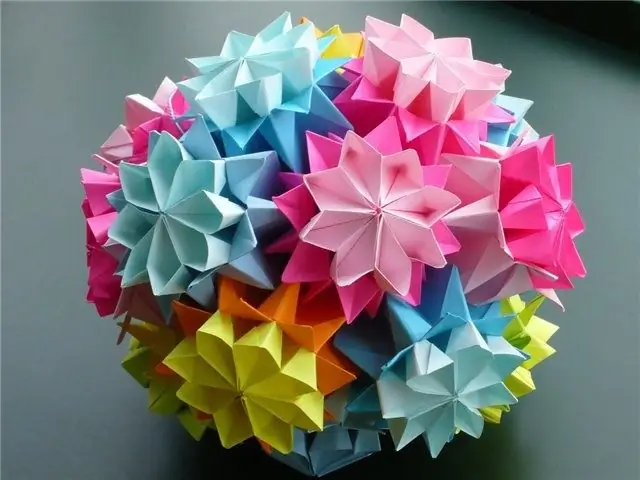Origami is the Japanese art of paper construction. Using this technique, you can make many different crafts, ranging from flowers, animal figurines, to items for table setting, decorating lamps and vases.

Instructions
Step 1
First of all, you should take a closer look at the paper and the features of its different types, since this is exactly the material with which you will be working. For origami, you can use typographic, newspaper and drawing, wallpaper, velvet, pebbled paper and cardboard. It is important that you learn how to choose it correctly depending on the type of craft. However, since you are a beginner, you can use newsprint for your first crafts (in the future, any newspaper sheet can become a kind of "draft" for you as a trial material).
Step 2
Start learning the art of origami by studying the basic symbols and designations, as well as the basic basic folds (as the most elementary figures are called), since they are the basis of most of the origami models. These include, among others, a pancake and a kite, a book, a double square, a door, a frog, a bird, a fish.
Step 3
For example, one of the simplest forms is a door. If you look at the diagram of its manufacture, you can see that this is a square, which is divided in the middle by a solid line, and each of the resulting rectangles is strictly in the center divided by a dotted line. To get this shape, fold the square in half. Then unbend it, and then bend it to this line on both sides of the "door".
Step 4
After learning the basics of origami techniques and the basic forms of this art, you can move on to making various crafts. However, not beautiful complex figures. After all, even if you have a very strong desire to fulfill them, until you gain experience with products of low and medium level of complexity, they will not turn out to be of the highest quality. For example, you can start by making animal figurines. Flowers of simple shapes such as irises, gladioli, tulips, lilies or lotus flowers will also work.
Step 5
When practicing folding techniques, be careful to make the folds correctly at each stage of the work. Otherwise, during further work, the folds will overlap each other, and the elements will shift. As a result, the product will turn out to be sloppy, and in some cases it may even turn out that it cannot be folded to the end.






